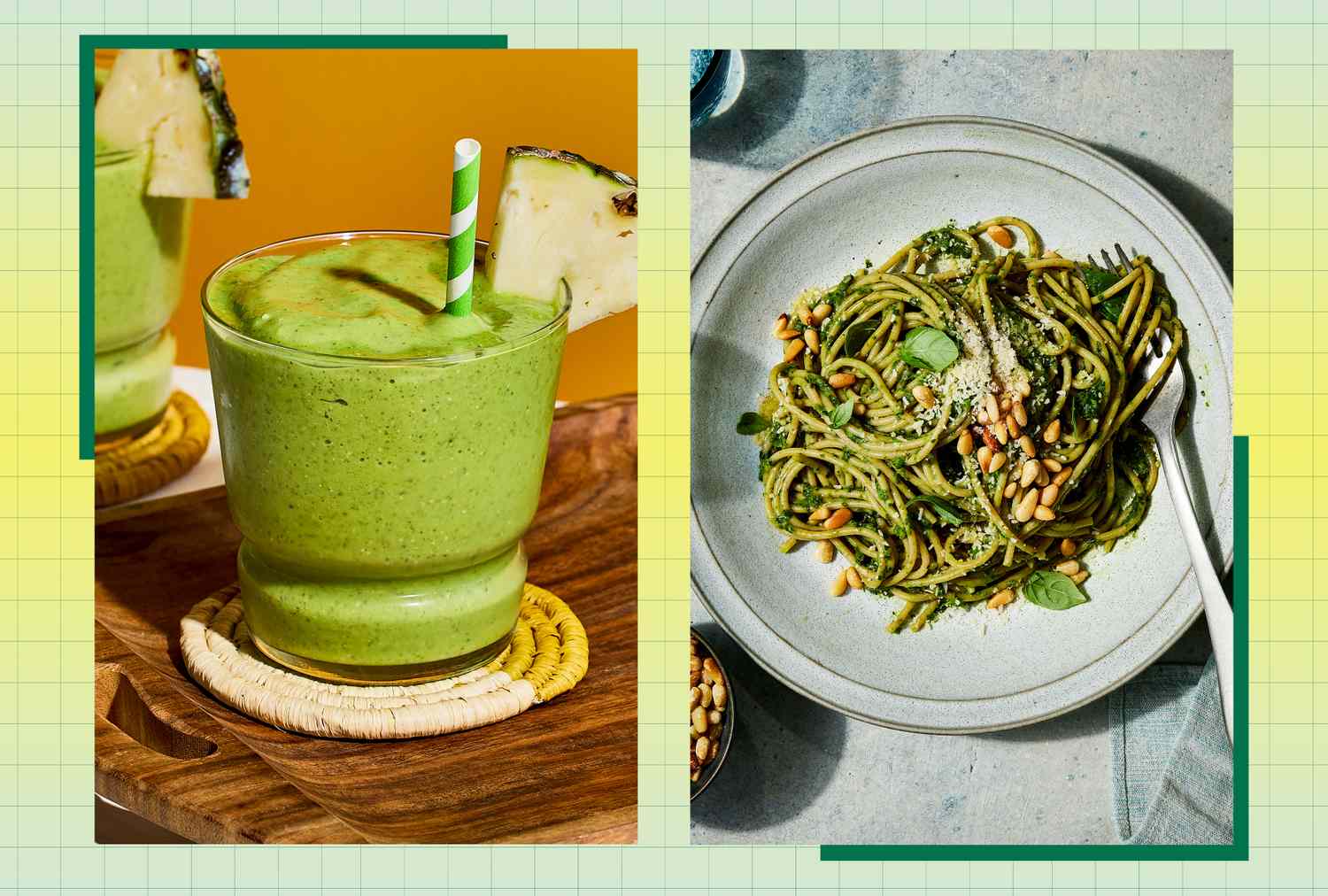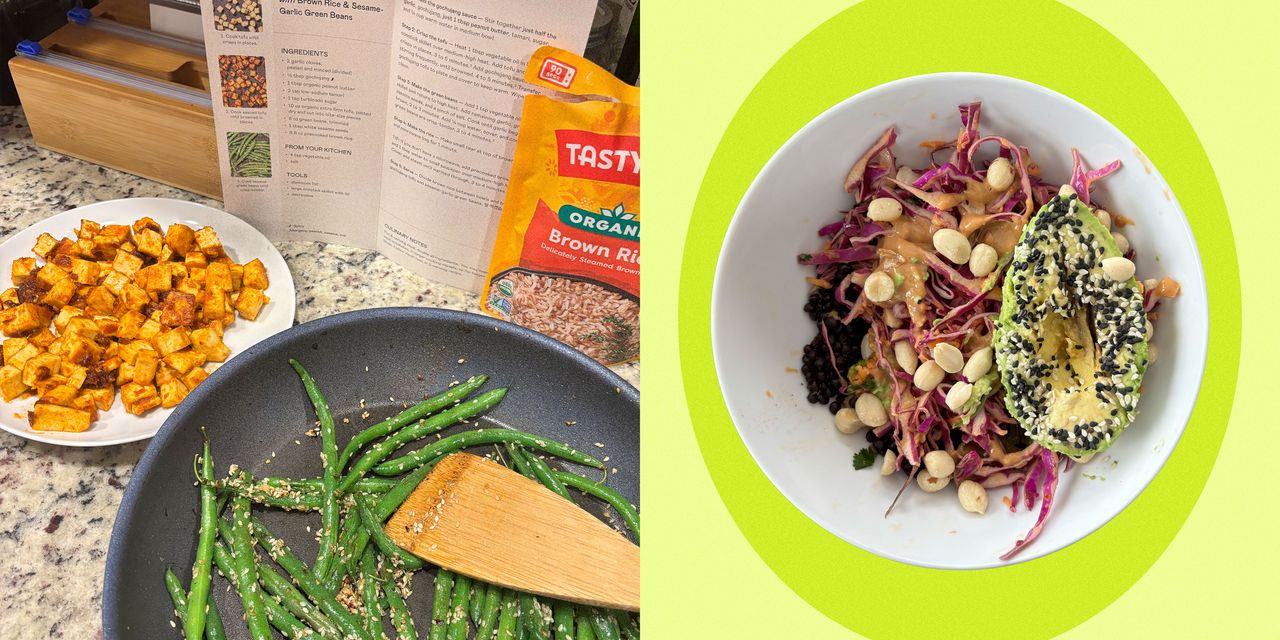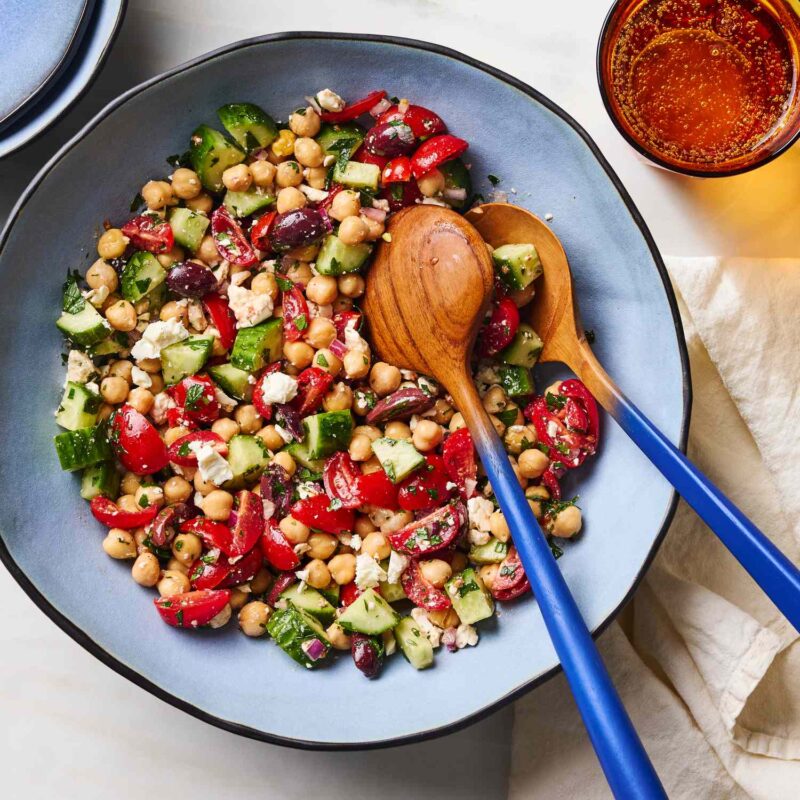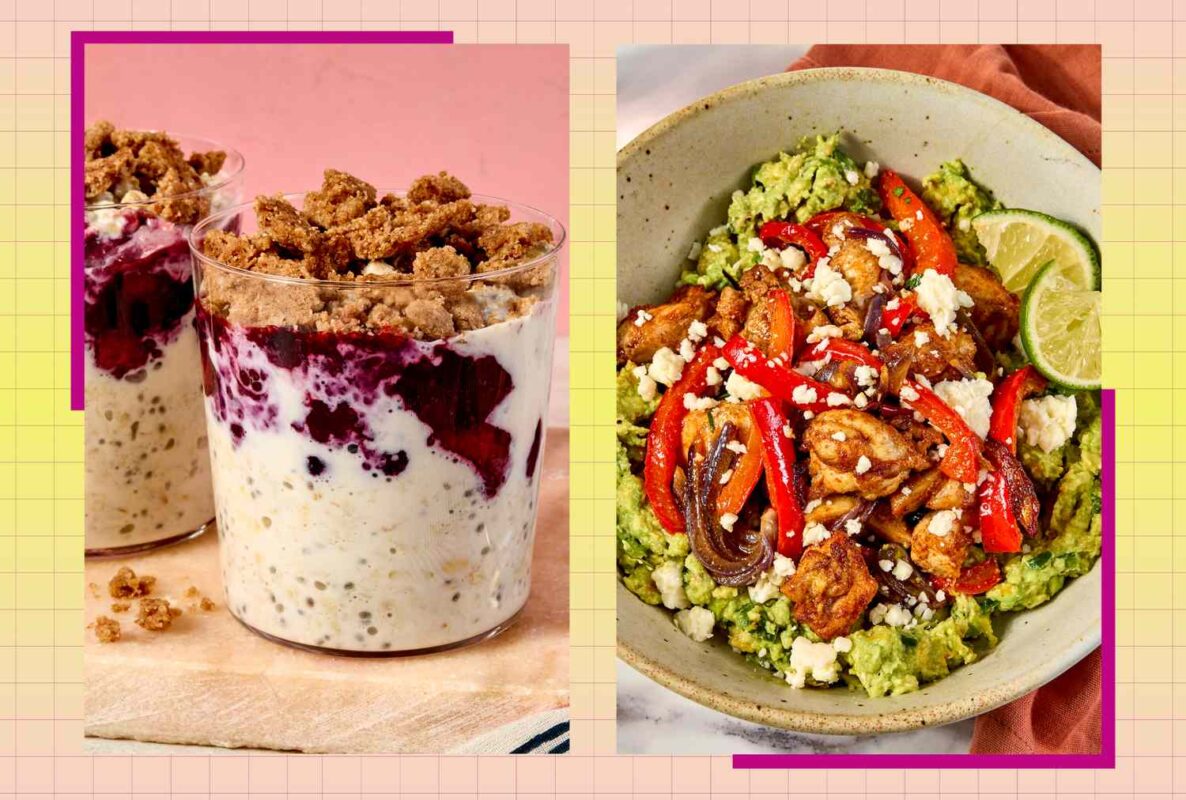Blog
7-Day No-Sugar High-Fiber Meal Plan for Insulin Resistance

| Meal Plan at a Glance | ||
|---|---|---|
| BREAKFAST/ A.M. SNACK | LUNCH/ P.M. SNACK | DINNER |
| Eggs/ Blackberries | Sandwich/ Apple | Salmon & salad |
| Overnight oats/ Apple | Chicken/ Pear | Steak & potatoes |
| Overnight oats/ Blackberries | Chicken/ Apple | Chicken cacciatore |
| Yogurt/ Pear | Chicken/ Raspberries | Chicken cacciatore |
| Yogurt/ Raspberries | Chicken/ Apple | Pasta |
| Eggs/ Pear | Tuna salad/ Apple | Fish tacos & salad |
| Eggs/ Clementine | Tuna salad/ Apple | Kale salad |
Day 1
Breakfast (295 calories)
Morning Snack (143 calories)
- ½ cup low-fat cottage cheese
- 1 cup blackberries
Lunch (377 calories)
Afternoon Snack (193 calories)
Dinner (508 calories)
Daily Totals: 1,517 calories, 69g fat, 89g protein, 147g carbohydrate, 40g fiber, 1,898mg sodium
Make it 2,000 calories: Add 1 serving Spinach, Peanut Butter & Banana Smoothie to breakfast and add 20 unsalted dry-roasted almonds to A.M. snack.
Day 2
Breakfast (390 calories)
Morning Snack (193 calories)
Lunch (413 calories)
Afternoon Snack (101 calories)
Dinner (415 calories)
Daily Totals: 1,512 calories, 67g fat, 80g protein, 164g carbohydrate, 35g fiber, 1,531mg sodium
Make it 2,000 calories: Add 1 medium banana to lunch, add ¼ cup unsalted dry-roasted almonds to P.M. snack and add 1 serving Traditional Greek Salad to dinner.
Day 3
Breakfast (390 calories)
Morning Snack (143 calories)
- ½ cup low-fat cottage cheese
- 1 cup blackberries
Lunch (413 calories)
Afternoon Snack (95 calories)
Dinner (448 calories)
Meal-Prep Tip: Reserve leftover Slow-Cooker Chicken Cacciatore with Polenta to have for dinner tomorrow.
Daily Totals: 1,489 calories, 53g fat, 96g protein, 167g carbohydrate, 37g fiber, 1,985mg sodium
Make it 2,000 calories: Add 18 unsalted dry-roasted almonds to A.M. snack, add 2 Tbsp. natural peanut butter to P.M. snack and add 2 cups mixed greens with 1 serving Balsamic Vinaigrette to dinner.
Day 4
Breakfast (303 calories)
- 1 cup low-fat plain strained yogurt, such as Greek-style
- 2 Tbsp. chopped walnuts, toasted if desired
- ½ cup blueberries
Morning Snack (131 calories)
Lunch (413 calories)
Afternoon Snack (221 calories)
- 1 cup edamame, in pods
- ⅓ cup raspberries
Dinner (448 calories)
Daily Totals: 1,517 calories, 49g fat, 110g protein, 165g carbohydrate, 35g fiber, 1,373mg sodium
Make it 2,000 calories: Add ¼ cup unsalted dry-roasted almonds to A.M. snack, add 1 medium banana to lunch and add 2 cups mixed greens with 1 serving Balsamic Vinaigrette to dinner.
Day 5
Breakfast (303 calories)
- 1 cup low-fat plain strained yogurt, such as Greek-style
- 2 Tbsp. chopped walnuts, toasted if desired
- ½ cup blueberries
Morning Snack (171 calories)
- ¾ cup edamame, in pods
- ⅓ cup raspberries
Lunch (413 calories)
Afternoon Snack (193 calories)
Dinner (437 calories)
Daily Totals: 1,518 calories, 67g fat, 87g protein, 151g carbohydrate, 35g fiber, 1,318mg sodium
Make it 2,000 calories: Add 1 serving Traditional Greek Salad to dinner and add 1 serving 2-Ingredient Peanut Butter Banana Ice Cream as an evening snack.
Day 6
Breakfast (295 calories)
Morning Snack (186 calories)
- ½ cup low-fat plain kefir
- 1 large pear
Lunch (357 calories)
Afternoon Snack (193 calories)
Dinner (488 calories)
Daily Totals: 1,519 calories, 65g fat, 77g protein, 167g carbohydrate, 37g fiber, 1,615mg sodium
Make it 2,000 calories: Add 20 unsalted dry-roasted almonds to A.M. snack and add 1 serving 2-Ingredient Peanut Butter Banana Ice Cream as an evening snack.
Day 7
Breakfast (295 calories)
Morning Snack (90 calories)
- ½ cup low-fat plain kefir
- 1 clementine
Lunch (357 calories)
Afternoon Snack (193 calories)
Dinner (588 calories)
Daily Totals: 1,523 calories, 75g fat, 70g protein, 151g carbohydrate, 35g fiber, 1,734mg sodium
Make it 2,000 calories: Add 1 serving Pineapple Green Smoothie and ¼ cup unsalted dry-roasted almonds to A.M. snack.
Frequently Asked Questions
Is it OK to mix and match meals if there’s one I don’t like?Yes! This meal plan is meant to serve as inspiration. It doesn’t need to be followed exactly to reap the benefits. When choosing recipes, we made sure to check the calories, fiber, protein and sodium to align with the parameters of this plan and be within our sodium limits. If you’re making a recipe swap, it may be helpful to choose a recipe with similar calories, fiber, protein and sodium levels. For more inspiration, check out these delicious sugar-free recipes.
Can I eat the same breakfast or lunch every day?Definitely, it’s fine to eat the same breakfast or lunch every day. The breakfasts range from 295 to 390 calories, while the lunches span 357 to 413 calories. These ranges are fairly close, though if you’re closely monitoring your calories or other nutrients, like protein, you may want to adjust a snack or two.
Why is there not a modification for 1,200 calories?We no longer provide modifications for 1,200-calorie days in our meal plans. The 2020-2025 Dietary Guidelines for Americans suggests that limiting calories to 1,200 per day is too low for most people to meet their nutritional needs, plus it’s unsustainable for long-term health and well-being.
What causes insulin resistance?Insulin is a hormone released by the pancreas when blood sugar levels rise, a natural response that occurs when food is broken down into the simplest form of sugar called glucose.
When things are working smoothly, insulin helps move blood sugars into the cells for energy, which returns circulating blood sugar to normal baseline levels. Over time, the body can develop a tolerance to insulin, meaning the blood sugars don’t respond as well despite the body pumping out high insulin levels, which results in elevated blood sugar levels.
While there isn’t a singular cause of insulin resistance, the Centers for Disease Control and Prevention (CDC) cites factors that can increase risk, including a family history of type 2 diabetes, lack of physical activity and obesity. And because added sugars are so prevalent in food and many people consume more than they realize, we opted to exclude them from this plan. Instead, we focus on nutrients that are shown to improve blood sugars—like fiber and protein.
Strategies to Improve Insulin Resistance
- Increase Fiber: Fiber is linked to many health benefits, including protecting the heart and promoting a healthy gut. Additionally, it helps stabilize blood sugar levels and keeps you full for longer by slowing down digestion.
- Exercise Frequently: The CDC and the American Diabetes Association (ADA) recommend physical activity as one of the most important and beneficial steps for improving insulin resistance.
- Ensure Regular Meals: Eating regular meals and snacks, ideally with a good source of fiber and protein, helps promote stable blood sugars and eating too much.
- Boost Protein: In addition to helping you build muscle and other body functions, protein also slows down digestion and improves satiety. Pairing protein-rich foods with those higher in carbohydrates helps temper the blood sugar response and stabilize levels.
- Reduce Added Sugars: Though added sugar can be included in moderation, stick to the American Heart Association’s recommended daily max of 9 teaspoons of added sugar for men and 6 for women.
How We Create Meal Plans
Registered dietitians thoughtfully create EatingWell‘s meal plans to be easy-to-follow and delicious. Each meal plan meets specific parameters depending on the health condition and/or lifestyle goal it is targeting and is analyzed for accuracy using the nutrition database, ESHA Food Processor. As nutritional needs differ from person to person, we encourage you to use these plans as inspiration and adjust as you see fit.
Dig Deeper
The #1 Nutrient to Improve Insulin Resistance, According to Dietitians
10 Amazing Health Benefits of Fiber












